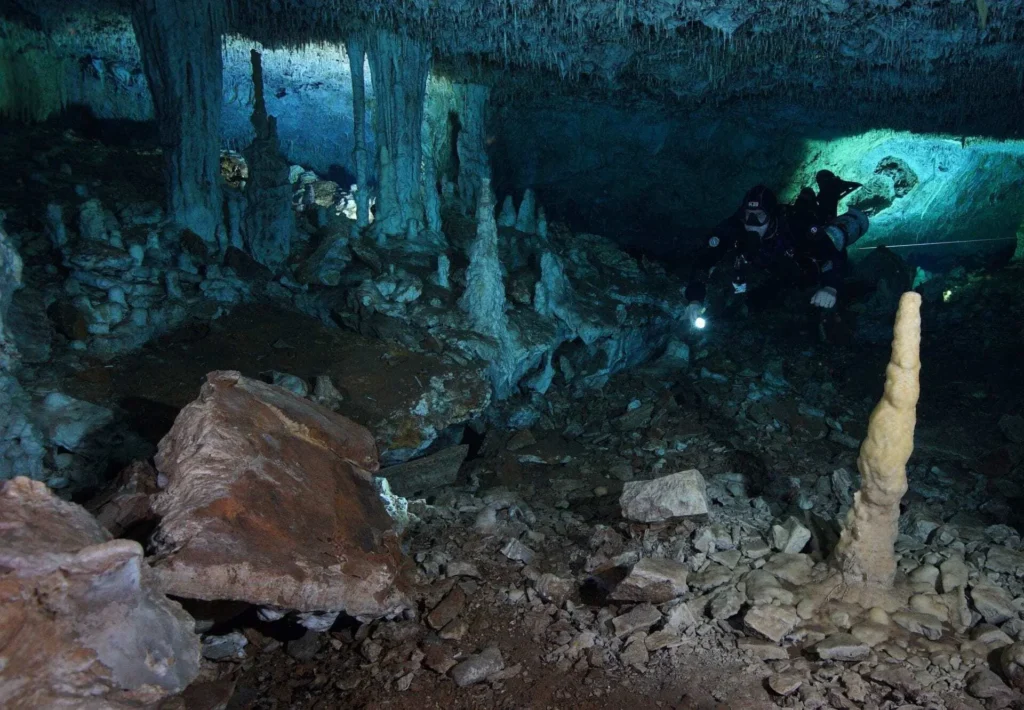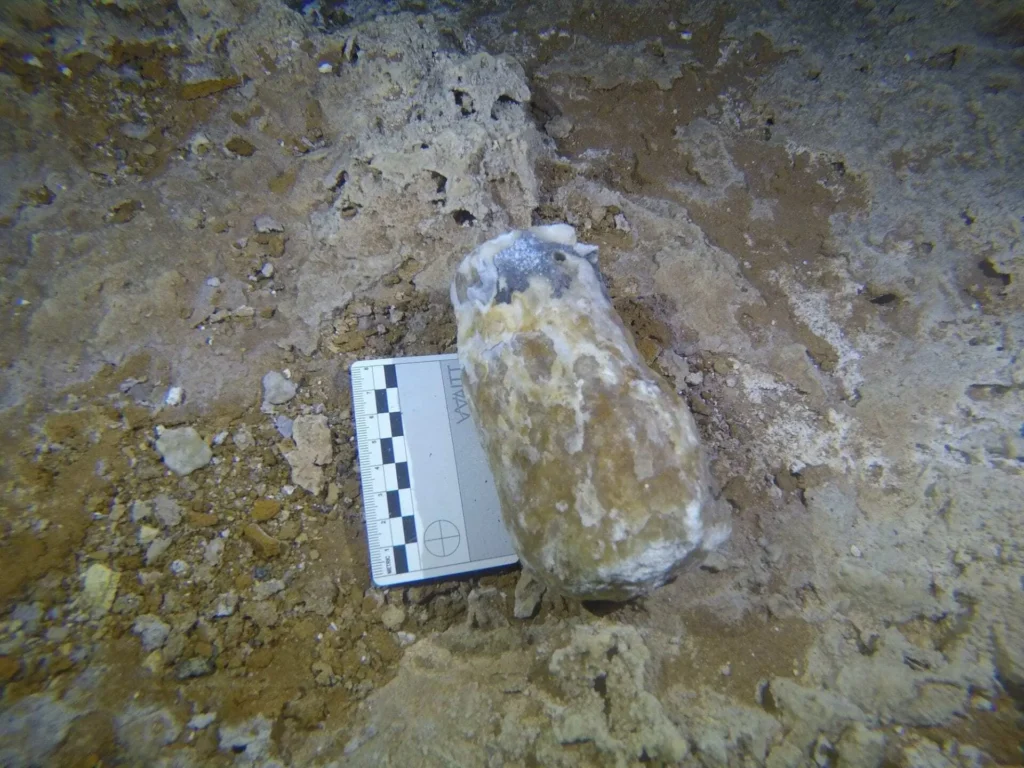ARCHAEOLOGISTS DISCOVER ANCIENT OCHRE MINE THAT UNLOCKS THE LIVES OF EARLY AMERICANS
A team from CINDAQ had been exploring a cave system in Mexico’s Yucatan Peninsula, navigating several kilometres of underwater passages when they came across features within the subterranean landscape that had been unnaturally altered.
They conducted nearly 100 expeditions and collected samples, captured more than 20,000 photographs and gathered hours of 360-degree video footage to enable researchers to study the unnatural formations and archaeological remains in situ.

The CINDAQ divers brought the discovery to the attention of Mexico’s Instituto Nacional de Antropología e Historia (INAH) as well as the experts from academia to fully understand its significance.
Researchers have determined that the cave system was inhabited from between 12,000-10,000 years ago, predating the rise of Maya culture and was occupied for around 2,000 years.
During this period, the cave was mined for ochre, a natural clay earth pigment which is a mixture of ferric oxide and varying amounts of clay and sand often used in rock paintings, mortuary practices, painted objects, and for personal adornment.

Remains of ochre extraction beds and pits have been identified, along with digging tools, navigational markers, and fire pits. In some parts of the cave complex, the cave ceiling is still visibly blackened by what appears to be soot caused by small fires.
Eduard Reinhardt from the School Of Geography & Earth Sciences at McMaster University said: “Most evidence of ancient mining on the surface has been altered through natural and human processes, obscuring the record.
These underwater caves are a time capsule. With all the tools left as they were 10,000 – 12,000 years ago, it represents a unique learning opportunity. It took advanced expertise to work in the caves recovering ochre, so we know it was very valuable for the earliest peoples of the Americas.”

Brandi MacDonald from the Archaeometry Laboratory at the University of Missouri said: “What is remarkable is not only the preservation of the mining activity, but also the age and duration of it.
We rarely, if ever, get to observe such clear evidence of ochre pigment mining of Paleoindian age in North America, so to get to explore and interpret this is an incredible opportunity for us. Our study reinforces the notion that ochre has long been an important material throughout human history.”
